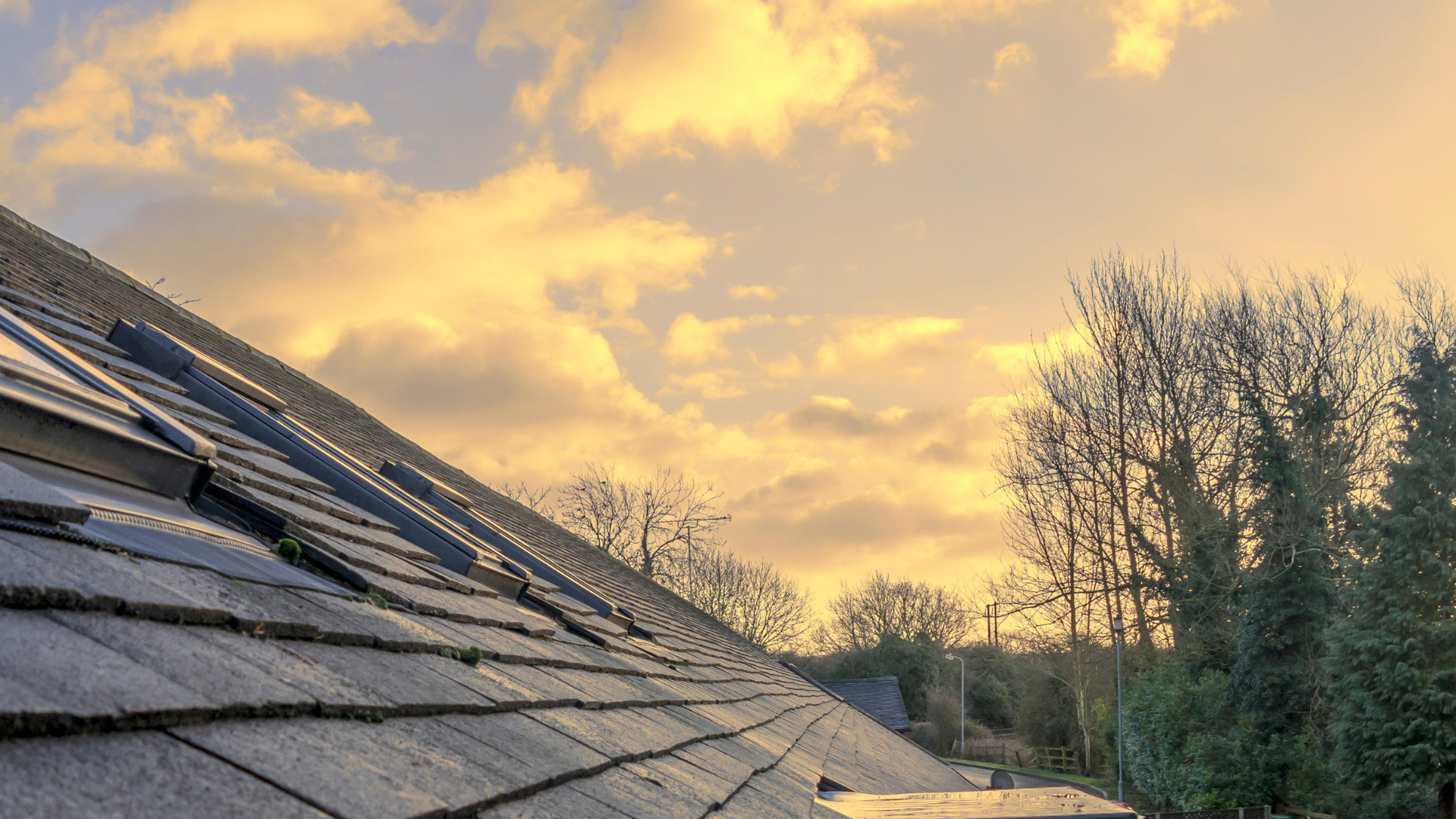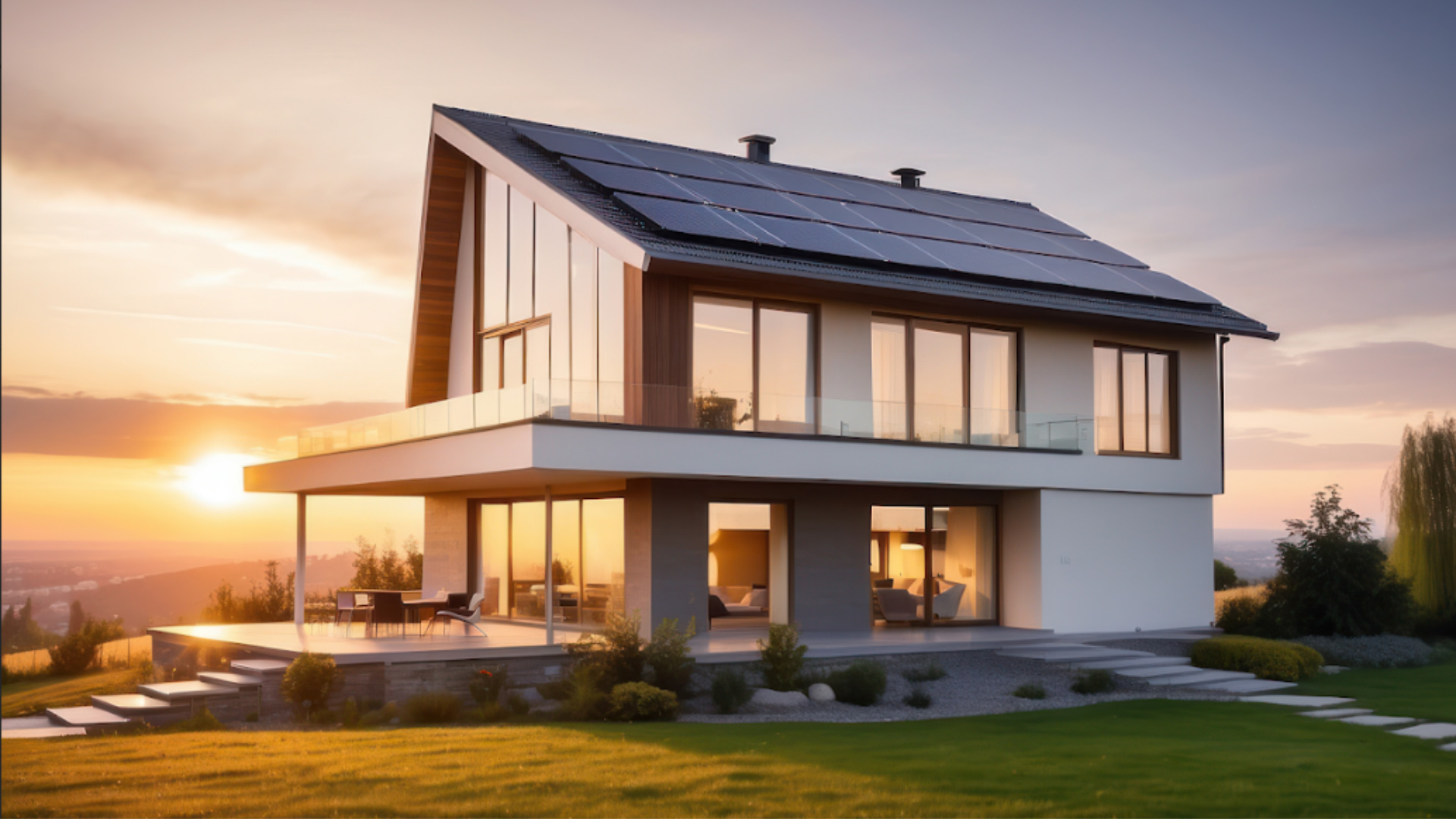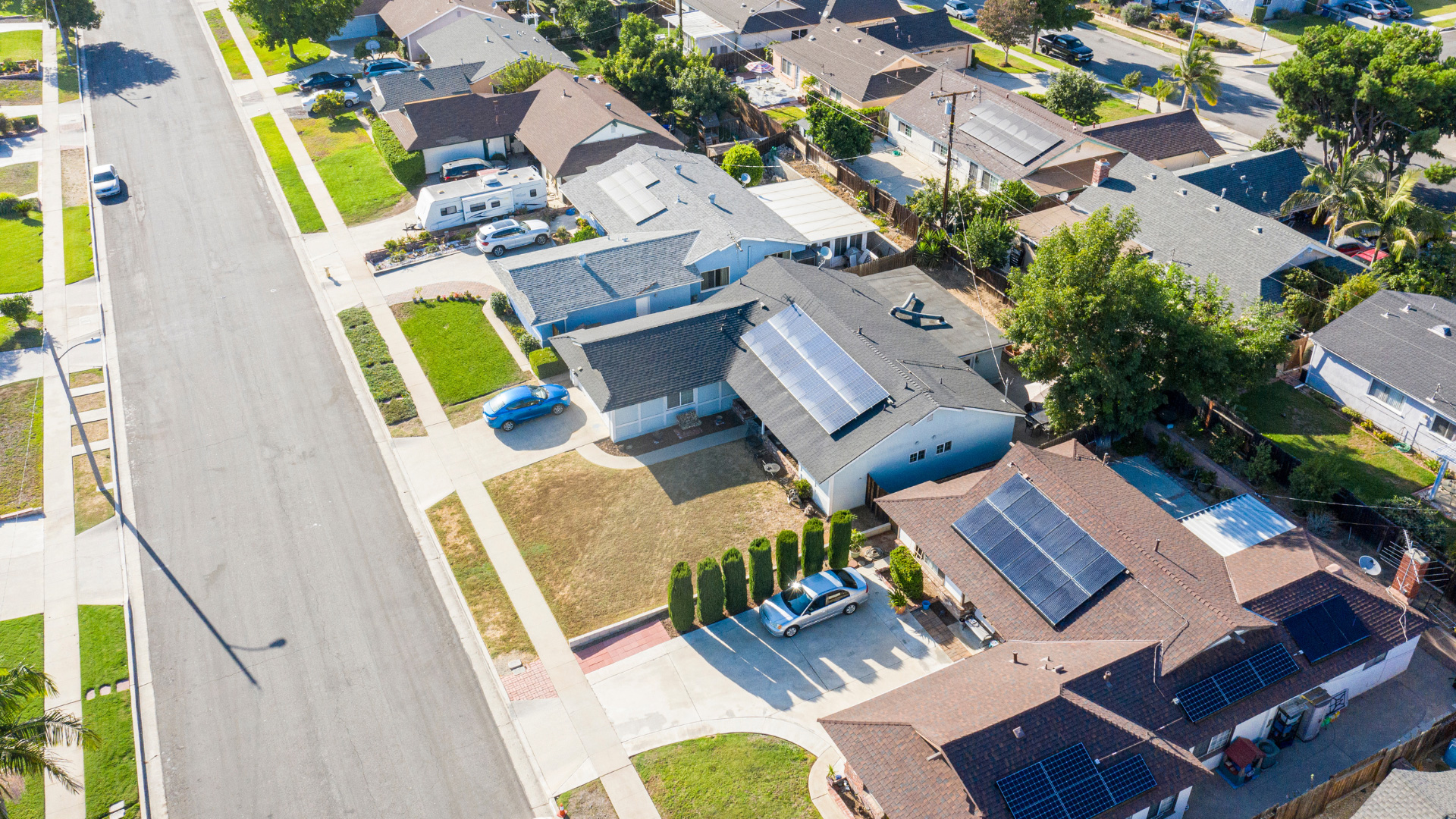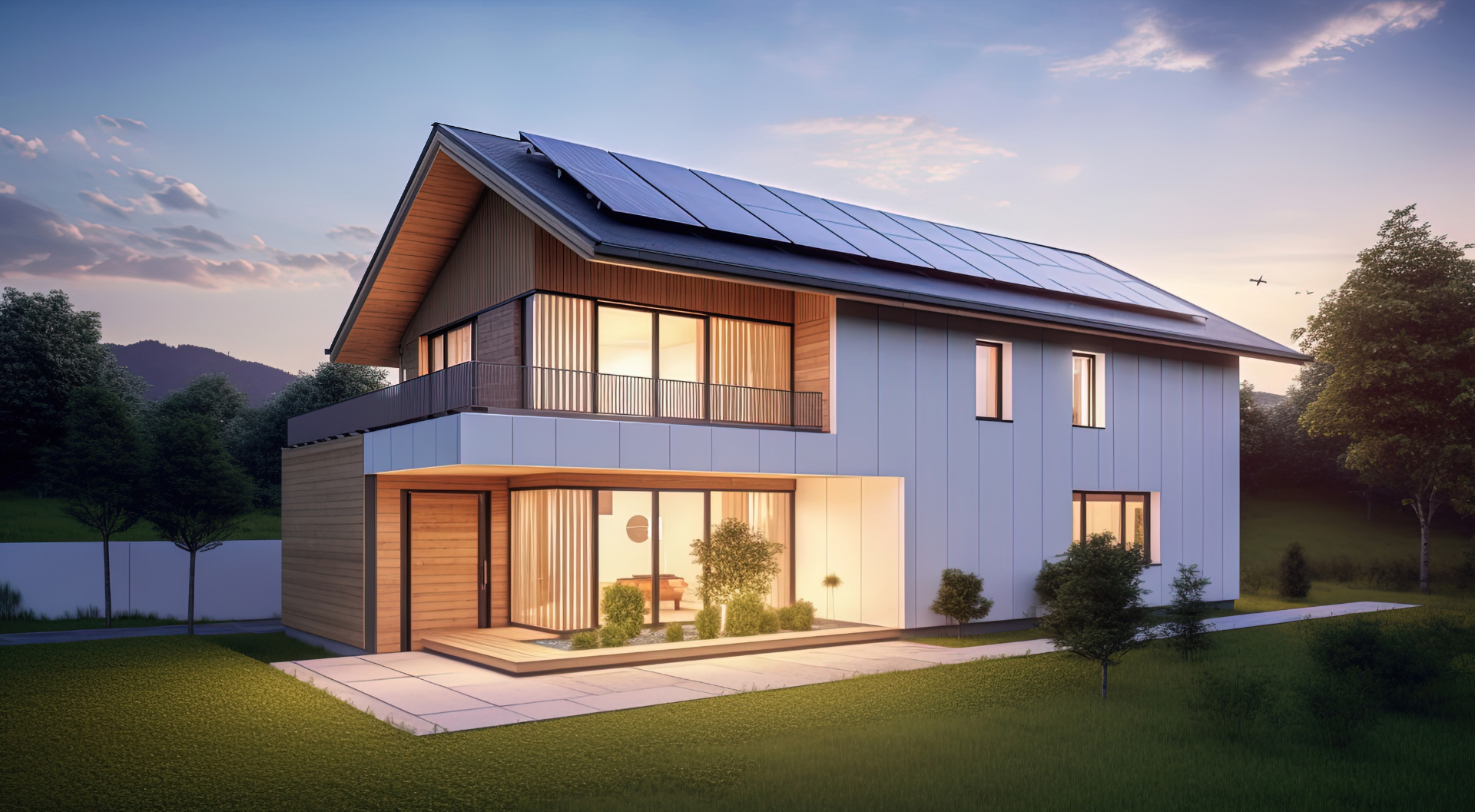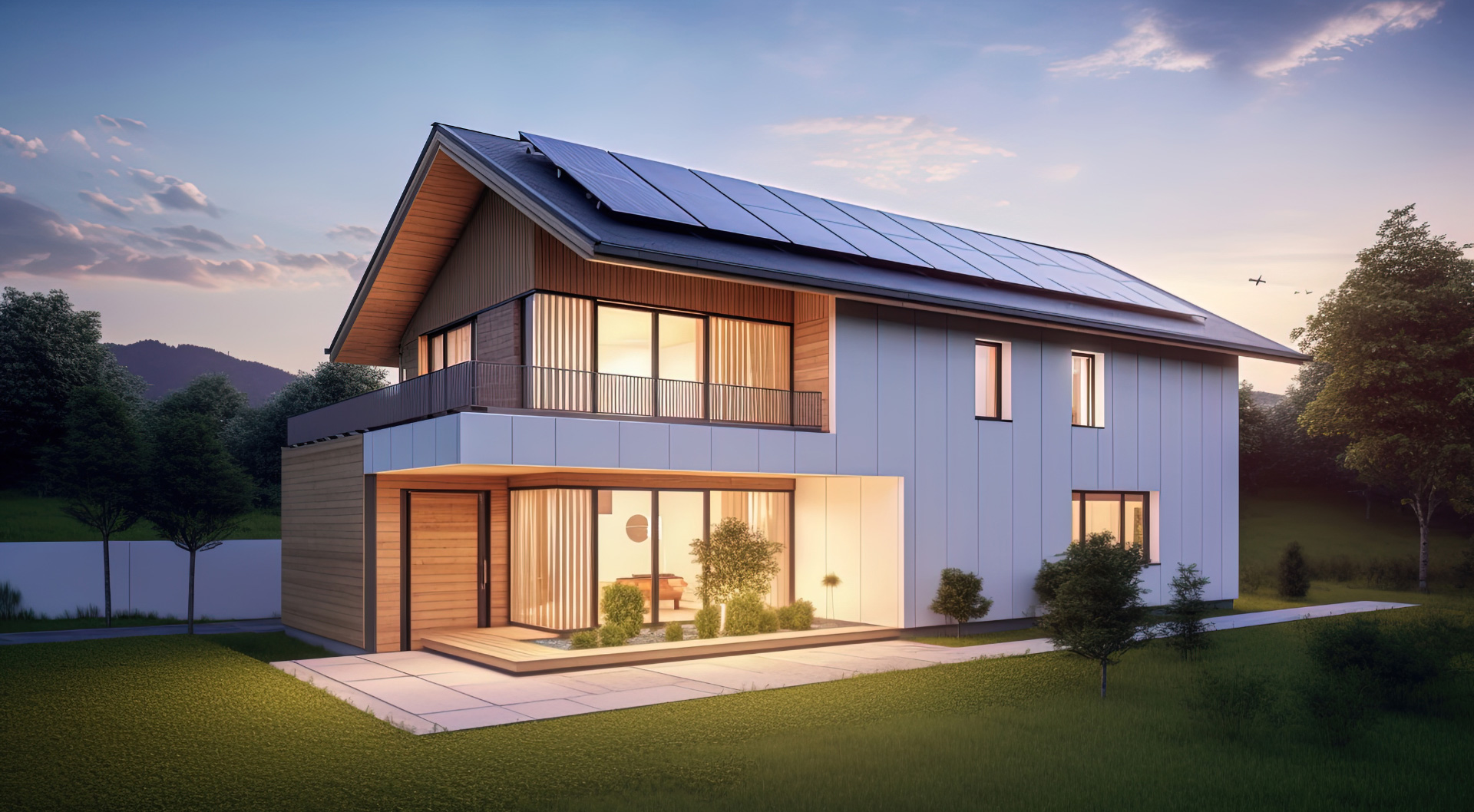The south-facing orientation is ideal for solar panels. However, sometimes, installing panels on your south-facing roof may not be feasible. Perhaps there are obstructions, like buildings on the south side, or roof space is limited. In such a situation, you can opt for the second-best option — the east-facing roof. Explore whether east-facing solar panels can provide the energy output you need for your home or business.
How Do Solar Panels Work?
Solar cells are the building blocks of solar panels. These cells take in solar energy and transform it into electricity. Each cell has a semiconductor material-filled space between a pair of electrodes on either side that allows this transformation.
When sunlight strikes this substance, some energy packets of light dislodge electrons from their atoms, enabling the cell to produce an electric current. So, for a solar panel to work, all it needs is exposure to sunlight.
Why Solar Panel Placement Is Important
Solar panel orientation is one of the most critical aspects of solar installation. It determines the amount of electricity your system generates. When placement is done right, panels receive maximum sunlight, resulting in higher solar panel efficiency.
On the contrary, incorrect orientation reduces sunlight exposure, leading to decreased energy production. There are three primary aspects that technicians factor in when it comes to solar panel orientation. These include:
1. Direction
As a standard practice, you should install your solar panels on the south-facing roof. This orientation ensures that the modules receive maximum sunlight throughout the day. Moreover, many south-facing roofs are less prone to shading from nearby structures.
However, when your south-facing roof isn’t usable, you can install panels on the east-facing roofs. While the east-facing solar panels may not generate as much energy as those facing the south, they generate enough for your consumption.
2. Angle of Installation
Angle of installation is another thing that solar power technicians factor in when looking to get the most out of a solar power setup. Preferably, you should install your solar panels at an angle ranging from 15 to 40 degrees.
The positioning depends on several factors, some of which include your geographical location and the sun’s path. When the panels are installed at an optimal angle, they capture more light to yield enough power.
Note that missing the angle by just a few degrees can result in decreased sunlight absorption and suboptimal performance. As such, you shouldn’t take chances with angle positioning when setting up your east-facing solar panels.
3. Change of Installation Angle
There is no right solar panel orientation angle that suits every season. You’ll have to adjust the panels’ angle from time to time for optimal performance. For instance, in summer, you need to lower the angle of panels to trap more light.
Similarly, in winter, you will need to increase the angle of the panels for maximum output. Otherwise, your photovoltaic panels will not get enough sunlight exposure, a flaw that can result in decreased electricity production.
Which Is the Best Direction To Place Solar Panels?
Solar panels facing south in the Northern Hemisphere will generate the most significant electricity. The United States is located in the northern hemisphere, meaning the best option for residents is to place solar panels facing south.
The sun often rises and sets above the equator throughout the year. If you are located north of the Equator, you can receive the most sunshine by facing south toward the Equator. Every day of the year, the sun crosses the southern half of the sky north of the Tropic of Cancer. The entire American mainland is in this region.
South-facing solar panels will always face the sun because the country is orientated south. However, not all homes in America have a south-facing roof. What happens if this is the case for your house?
What To Do When South Is Not An Option?
If you cannot have the ideal south-facing roof for your panel, that doesn’t mean you can’t enjoy the green energy from using solar. Here are a few options you can consider:
- Install extra solar panels on your roof for more electricity production
- Install a ground-mounted solar energy system in your garden
- Use solar panel tracking systems
- Install your solar panels on an east-facing roof
How Effective Are Solar Panels on East-Facing Roofs?
Using an east-facing roof is an excellent alternative when mounting solar panels facing south is impossible. It is the second-best orientation, significantly more effective than west or north. East-facing panels can create only 20% less of what a south-facing system would generate in a region with ideal solar conditions.
Pros of an East-Facing Roof
- During the winter, sunlight reaches east-facing roofs all day, from early morning to late afternoon.
- It produces 80 percent of what a south-facing roof would produce, which is relatively high, despite its lower efficiency.
Cons of an East-Facing Roof
- Energy production is lower due to morning shadowing from trees and structures.
- Less sunshine is available in summer when it’s needed most.
Let Solar Optimum Help You Determine the Best Setup for Your System
Setting up your east-facing solar panels at the right angle takes work; you need to weigh factors like location, roof pitch and shading from nearby structures to establish the right orientation.
Given the complexities of setting up panels, you should always involve experts like Solar Optimum to simplify the process. Our technicians use technologies like solar simulation software to determine the most appropriate angle for installing your east-facing solar panels.
Contact us to determine the correct setup for your solar panel system.

